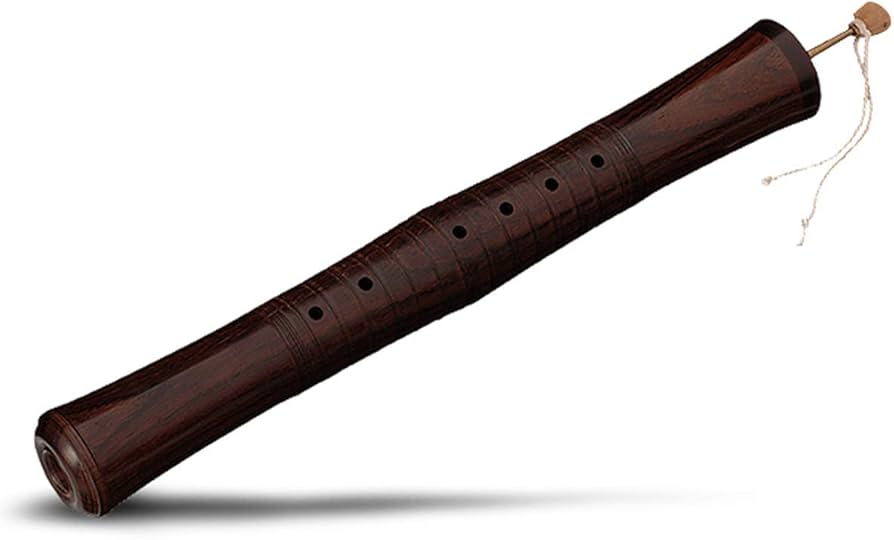Pi
Woodwinds
Asia
Between 1001 and 1900 AD
Video
The pi is a traditional Thai woodwind instrument that plays a significant role in the country’s rich musical heritage. Known for its distinctive sound and unique construction, the pi is an essential component of various ensembles, particularly in classical Thai music.
Description and Historical Origin
The pi is a double-reed instrument that resembles an oboe in its structure and playing technique. It typically features a conical bore and is made from materials such as hardwood or bamboo. The instrument consists of two main parts: the body and the mouthpiece, which houses the double reed. The pi is known for its bright and reedy tone, which can be both powerful and expressive.
Historically, the pi has been a prominent instrument in Thailand since the Sukhothai period (13th to 15th centuries). It has evolved over the centuries, becoming an integral part of the piphat ensemble, which accompanies various forms of traditional Thai performance, including dance and drama. The pi has been used in ceremonial music, royal court performances, and folk traditions, reflecting its versatility and cultural significance. The instrument’s name varies depending on its specific type, with different sizes producing different pitches.
The lower-pitched version is known as pi nai, while the higher-pitched version is called pi nok. This classification highlights the pi’s adaptability to various musical contexts.
Working Mechanism and Types
The working mechanism of the pi involves blowing air into the mouthpiece fitted with a double reed. When air passes through the reeds, they vibrate against each other, producing sound waves that resonate within the body of the instrument. Players can manipulate pitch by covering or uncovering finger holes along the body, allowing for intricate melodies and embellishments.There are several types of pi based on size and pitch:
- Pi Nai: The lower-pitched variant, often used for deeper melodic lines.
- Pi Nok: The higher-pitched version that provides bright melodies.
- Pi Klang: A medium-sized version that balances between the two.
- Pi Koy: A smaller version that produces treble sounds.
Each type serves specific roles within musical compositions, allowing for a diverse range of sounds when played together in ensembles.
Features and Significance
The pi is distinguished by several key features:
Capped Double Reed: This design allows players to produce sound without direct contact with the reeds, resulting in a unique tonal quality.
Bright Sound: Known for its loud and penetrating tone that can project over large ensembles, making it ideal for outdoor performances.
Cultural Importance: The pi holds significant historical value as it reflects Thai music practices and social customs. It symbolizes rural life while being part of formal musical settings.
In modern times, interest in traditional instruments like the pi has led to a revival of its use in contemporary music. Musicians continue to explore its sound within both traditional contexts and modern fusion genres that blend Thai music with other musical styles.
The pi is more than just an instrument; it embodies a rich cultural heritage that spans centuries. Its distinctive sound, unique construction, and historical context make it an important part of Thailand’s musical traditions. Whether played in ceremonial settings or folk performances, the pi continues to captivate musicians and audiences alike with its melodic charm and vibrant history.
FAQ
What is the Pi instrument and how does it work?
The Pi is a traditional stringed instrument from Southeast Asia, primarily played in Thai and Cambodian music. It consists of a long wooden body, and its strings are plucked or strummed, creating a unique melodic sound. The Pi is tuned by adjusting the tension of the strings, and its body shape helps amplify the sound.
How has the Pi instrument evolved over time?
The Pi has evolved significantly in design and construction. Originally made from simple materials like wood and animal gut, modern versions may use metal strings and synthetic materials. Its role in traditional music has expanded, and it is now used in both classical and popular performances in Southeast Asia.
What is the historical significance of the Pi in Southeast Asian culture?
The Pi has been a central element in Southeast Asian music for centuries, often featured in royal courts and religious ceremonies. Its distinctive sound is associated with cultural rituals, and it plays an important role in the orchestras of traditional Thai and Cambodian music, contributing to the melodic richness of these ensembles.
 Links
Links
References
Other Instrument
Categories


















